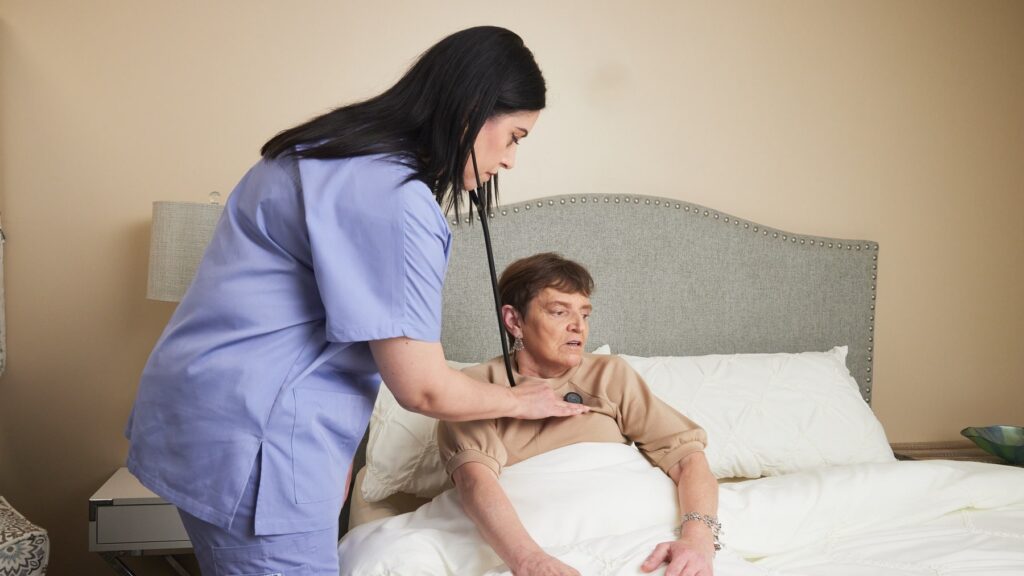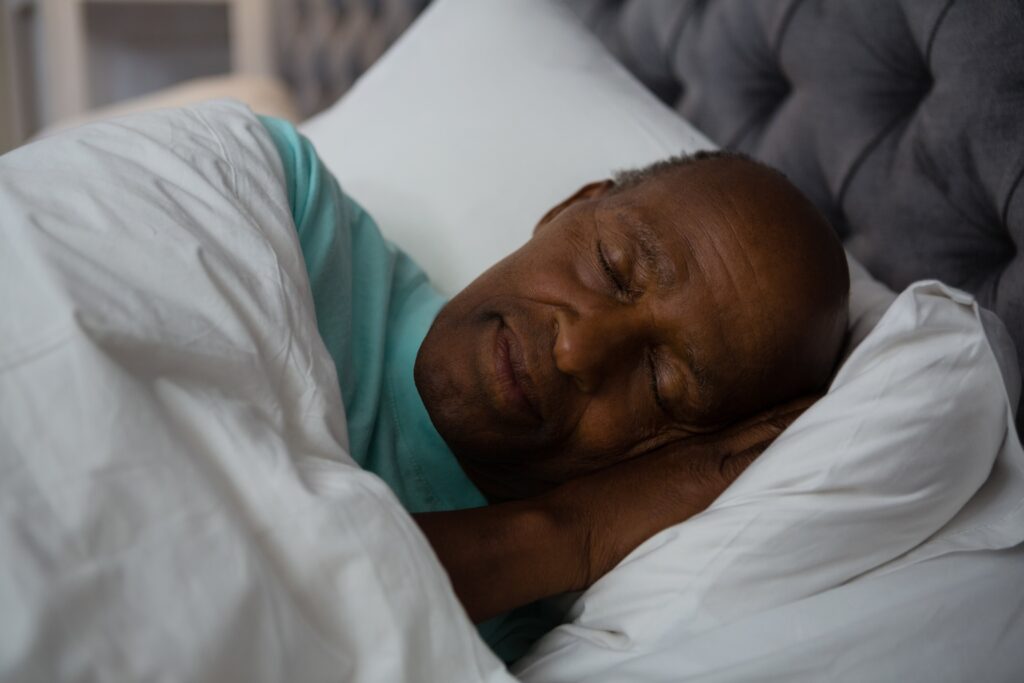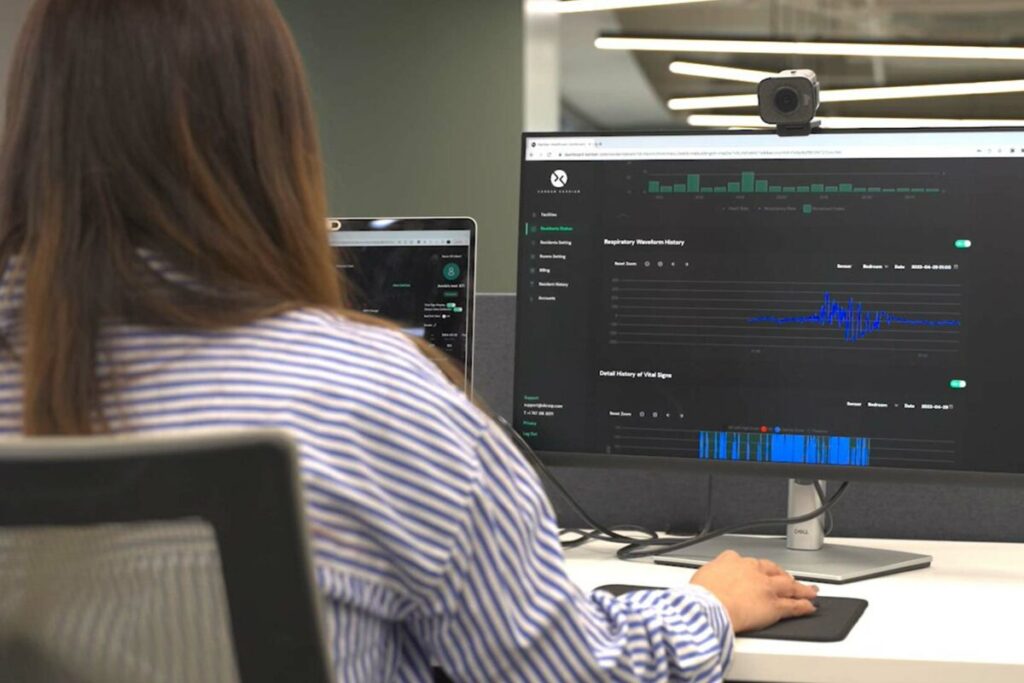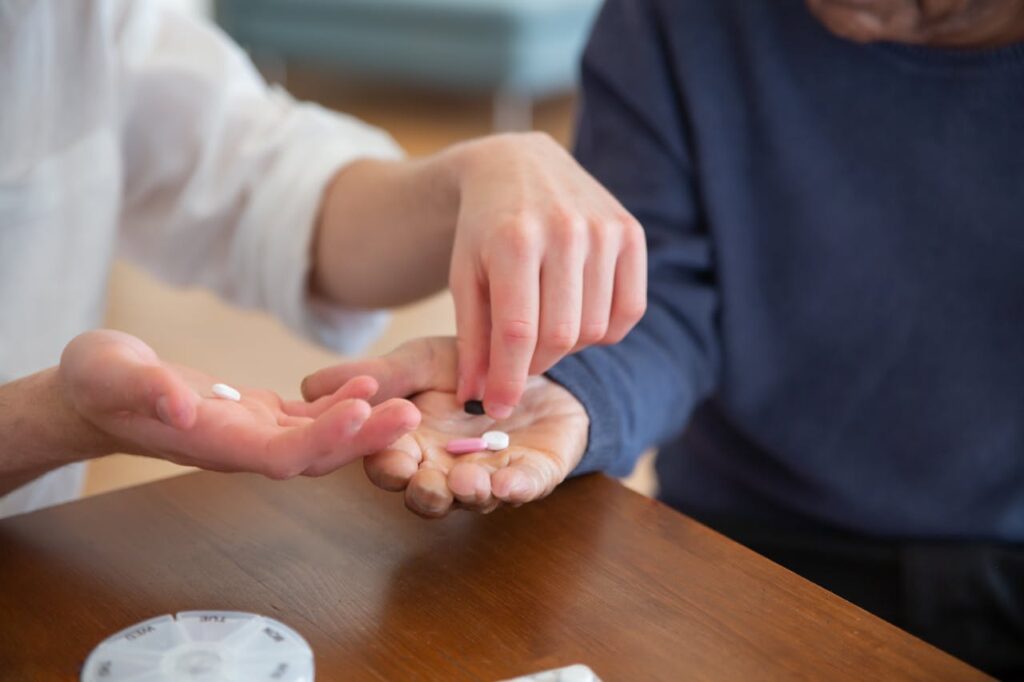The Hidden Risk: What Happens Between Spot Checks
 Spot checks have been the foundation of monitoring in SNFs for decades. But studies and real-world experience are showing us that they leave predictable gaps.
Spot checks have been the foundation of monitoring in SNFs for decades. But studies and real-world experience are showing us that they leave predictable gaps.
Here’s the simple truth: Health doesn’t wait for a schedule.
Many of the early signs of health decline happen gradually, in the hours or even days between scheduled checks. But because they often start subtly, they’re easy to miss.
What We Often Miss During the Gaps
The early clues may include:
- Small changes in breathing patterns
- Heart rate increasing or becoming irregular
- Reduced mobility or activity levels
- Restlessness or disrupted sleep
- Subtle signs of infection or respiratory issues
The challenge? By the time these clues become obvious — shortness of breath, visible distress, fever, or when vital signs start moving beyond traditional “normal” thresholds — it’s often too late for simple interventions. That’s when avoidable hospitalizations happen.
When Health Deterioration Happens in Silence

Health deterioration rarely announces itself during convenient scheduled visits. Instead, it builds quietly between checks, often through subtle changes that accumulate over time:
- Breathing may gradually become more labored.
- Heart rate may increase steadily.
- Temperature might start climbing slowly.
These small changes are easy to overlook during brief spot checks.
The nature of many serious conditions makes them particularly elusive during scheduled assessments. For example:
- Sepsis can develop rapidly, with early symptoms like slightly elevated heart rate or mild confusion often missed.
- Respiratory distress may begin as minor shortness of breath that worsens significantly over several hours.
- Sleep-related events such as cardiac arrhythmias, respiratory depression, or severe sleep apnea often occur at night, when monitoring is limited.
The psychological factor also plays a role. Many elderly residents hesitate to use call buttons or report symptoms, not wanting to “bother” staff. That means chest discomfort, trouble breathing, or unusual fatigue may go unreported until they become severe.
What Studies Tell Us About the Danger of Gaps

Health decline in older adults is more like a slow leak than a blow-out tire. It almost always starts in the quiet hours when no one is looking—and that’s exactly when traditional spot-checks leave us blind.
- Routine checks leave a 20-hour silence.
On most medical-surgical wards, nurses typically take vitals every 4–6 hours, meaning a resident is not monitored for roughly 90 % of the day. - Emergencies whisper first.
Roughly four out of five in-hospital cardiac arrests or unplanned ICU transfers show abnormal heart-rate or breathing changes hours beforehand—but those warnings fall between scheduled rounds.¹ - Closing the gap changes everything.
In a 7,643-patient controlled trial, 24/7 contact-free monitoring on a medical-surgical unit cut code-blue calls by 86 %, slashed ICU days by 45 %, and shortened length-of-stay.² - Older adults shoulder the biggest risk.
National data list infections, and respiratory illnesses among the top drivers of potentially avoidable hospitalizations in seniors—conditions that start with subtle, easy-to-miss signs.³
Bottom line: Spot-checks deliver snapshots; patient deterioration is a movie. When 9 out of 10 frames are missing, clinicians are forced to guess the plot—and older adults pay the price. Continuous, contact-free monitoring fills in the gaps and turns those silent hours into lifesaving forewarning.
Wearables Sound Good — But There Are Real-World Challenges

Many facilities have tried to close the gap with wearables — wristbands, patches, rings, medical alert devices. In theory, they provide more constant monitoring and can be part of the solution.
And in some settings, they work well — especially when residents are willing and able to use them consistently.
But real-world experience shows there are important limitations to be aware of:
- Compliance can be inconsistent: While studies show good adherence in controlled environments, many seniors stop using wearables over time due to discomfort or forgetfulness.⁴
- Cognitive and physical challenges: Residents with dementia may remove or forget devices. Limited dexterity makes devices hard to operate or charge.
- Skin conditions, swelling, or sensitivity: These make continuous wear uncomfortable or impractical for some residents.
- Maintenance adds to staff workload: Devices need charging, proper positioning, and regular checks.
- Respiratory data are often missing or delayed: Many wearables don’t measure respiratory rate (RR) continuously; they may track SpO₂ instead, which is a lagging indicator — RR changes usually appear first.
- Wearables may fail when needed most: During medical emergencies, falls, or confusion, residents may not have devices on or may be unable to activate them.
Wearables have their place — and many facilities use them as part of a broader monitoring strategy. But they don’t eliminate the risk of monitoring gaps entirely.
What Facilities Are Doing Differently: Continuous, Passive Monitoring
The good news is that technology is evolving to fill the gaps, without adding to staff tasks or relying on resident compliance.
One example gaining attention is radar-based, contactless monitoring, like the technology behind the Xandar Kardian’s XK300 sensor.
These small, discreet devices quietly track key health indicators like:
- Breathing patterns – including depth of respiration
- Heart rate
- Micro-movements
- Sleep disruptions
- Behaviour Patterns
There are no wires, no wearables, and no cameras — just continuous, passive monitoring happening in the background.
The goal isn’t to replace staff — it’s to give them real-time insight into what happens between checks, especially when residents can’t or won’t report subtle symptoms themselves.
Independent studies have shown that continuous passive monitoring can detect small physiological changes that often signal the beginning of health decline. In an independent validation study conducted by the Validation Institute, using Xandar Kardian’s radar-based sensors, found that this approach helped predict over 76% of hospital transfers several days in advance — giving staff critical time to intervene and prevent escalation.⁵
Real-World Impact: What Happens When We Fill the Gaps

Imagine this:
A resident is recovering well after a urinary tract infection (UTI). Spot checks during the day are normal. But overnight, passive radar monitoring picks up that their breathing and heart rate are increasing and sleep is disrupted — both early signs the infection may be returning.
In the morning, staff are alerted to the changes. The nurse checks on the resident, observes concerning signs, and promptly notifies the physician. After further evaluation, treatment is adjusted — all before the situation escalates to a hospitalization.
No emergency transfer. No stressful hospitalization. No avoidable escalation of care.
It’s not just better for the resident — it eases the burden on staff and brings peace of mind to families.
SUMMARY:
Spot Checks Are Essential — But Continuous Monitoring Is What Completes the Picture
Scheduled checks will always have a place in good care. But relying on them alone leaves dangerous gaps.
When those gaps go unaddressed:
- Early signs of health decline are missed
- Hospitalizations rise
- Staff feel overwhelmed responding to avoidable crises
- Families lose confidence
- Facilities face penalties under programs like SNF VBP
Continuous, passive monitoring helps fill those gaps. It gives staff the real-time awareness they need to intervene sooner, prevent crises, and create a safer, more stable environment for residents.
Because keeping residents out of the hospital isn’t just about more checks — it’s about smarter care between them.
References
¹ Resuscitation Council UK. Recognition of the Deteriorating Patient and Prevention of Cardiorespiratory Arrest (Chapter 3). 2021. https://lms.resus.org.uk/modules/m65-non-technical-skills/resources/chapter_3.pdf
²Brown H, et al. “Continuous Monitoring in an Inpatient Medical-Surgical Unit: A Controlled Clinical Trial.” Am J Med. 2014;127(3):226-232. https://pubmed.ncbi.nlm.nih.gov/24342543/
³Moy E, et al. “Potentially Preventable Hospitalizations—United States, 2001-2009.” MMWR Suppl. 2013;62(3):139-145. https://www.cdc.gov/mmwr/preview/mmwrhtml/su6203a23.htm
⁴ https://pmc.ncbi.nlm.nih.gov/articles/PMC7402656/
⁵Third-Party Independent Validation Study of Passive Radar Monitoring, 2024
https://validationinstitute.com/validated-provider/xandar-kardian/



